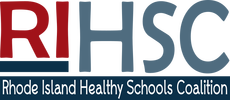adolescent sexual health:
community involvement

Schools can use community resources and services to respond more effectively to the health-related needs of students. Partnerships with community-based organizations and health care providers are key to helping students access a broad array of services and supports that help them succeed in school.
Community-based organizations can help school districts communicate with staff and families about sexual health issues, including access to services, while also providing professional resources for developing, promoting and improving policies and curricula related to sexual health, as well as critical professional development for health educators.
National organizations, state agencies, local organizations, healthcare clinics and medical personnel can all be valuable resources for school districts that are working to improve their sexual health policies, education or ongoing professional development across a wide range of sexual health topics including gender identity, rates and prevalence of STIs or teen pregnancy, intimate partner violence, consent, diversity and skills building for the cultivation of healthy relationships during the teen years and beyond.
Community-based organizations can help school districts communicate with staff and families about sexual health issues, including access to services, while also providing professional resources for developing, promoting and improving policies and curricula related to sexual health, as well as critical professional development for health educators.
National organizations, state agencies, local organizations, healthcare clinics and medical personnel can all be valuable resources for school districts that are working to improve their sexual health policies, education or ongoing professional development across a wide range of sexual health topics including gender identity, rates and prevalence of STIs or teen pregnancy, intimate partner violence, consent, diversity and skills building for the cultivation of healthy relationships during the teen years and beyond.
Resources:
- Community Action Toolkit (SEICUS) Tools to become knowledgeable about sex education, build support in your state or community, implement sound policies, and institute or defend effective sex education programs that support and affirm young people’s right to honest information.
- Strategies Guided by best Practice for Community Mobilization (Advocates for Youth) summarizes 14 key strategies that are based on best practices in community mobilization, collaborative partnerships, and coalition building.
- Using Community Engagement to Promote Sexual Health for Youth webinar (National Coalition of STD Directors) Speakers discuss how to effectively work with community based organizations to develop and implement innovative social marketing strategies that promote sexual health; how to engage and effectively work with community-based organizations and affected populatons to develop and conduct innovative sexual health programming; and how to collaborate with school based health programs and community health centers to promote sexual health.
- Establishing Organizational Partnerships to Increase Student Access to Sexual Health Services (National Coalition of STD Directors) provides many practical and concrete suggestions for the development of organizational partnerships to increase student access to sexual health services (SHS). The sections in this document outline the key concepts to establishing organizational partnerships.
